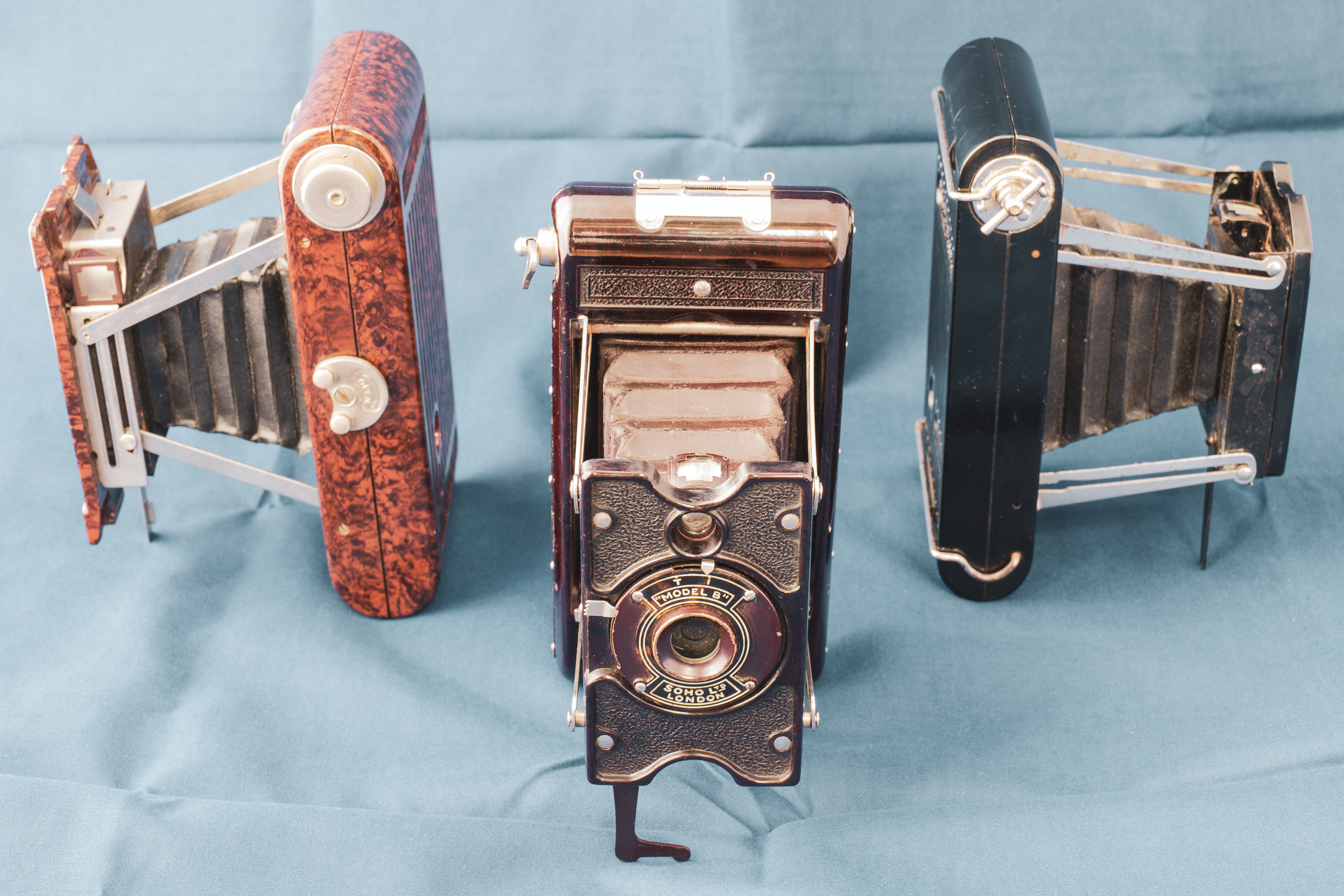A series looking at three British Bakelite folding strut cameras of the Art Deco era
Introduction: Struts, Style & Synthetics: Three British Bakelite Cameras of the Art Deco Era
Part 1: Struts, Style & Synthetics Part 1: APeM Rajar No.6
Part 2: Struts, Style & Synthetics Part 2: Kodak No.2 Hawkette
Soho Model B (1935)
✅ Type: Folding Strut Camera
✅ Material: Red/Brown Bakelite body with metal fittings
✅ Film Format: 120 roll film (6×9cm negatives)
🔹 Key Features:
- Part of a range of Bakelite-bodied folding cameras by Soho.
- Basic meniscus lens and single shutter speed, designed for amateur photographers.
The Soho Model B was the last of the British folding strut cameras made of Bakelite, and like the Rajar No.6 that preceded it, featured the 120 roll film format, and was also a low-cost camera for the amateur market.
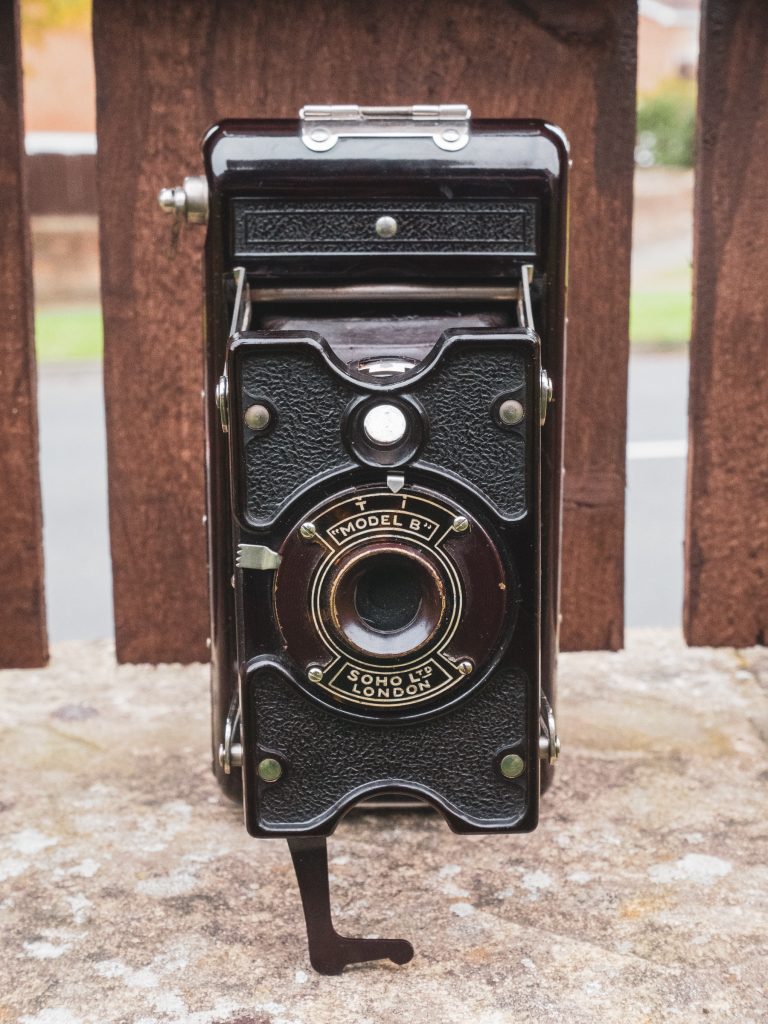
Not premium this time
Unlike the Rajar No.6 and Kodak No.2 Hawkette, this model was available to buy retail and was part of a range of Bakelite Soho cameras including the Pilot, Cadet and Tuon. The Model B, Cadet and Tuon shared many parts and design features such as the same red/brown Bakelite case colour with mottled textured finish and maroon bellows. This camera can be seen as the successor to the Rajar No.6. It’s of a very similar specification and shares the same strut mechanism, and despite the different brand name, was in reality made by the same manufacturer.
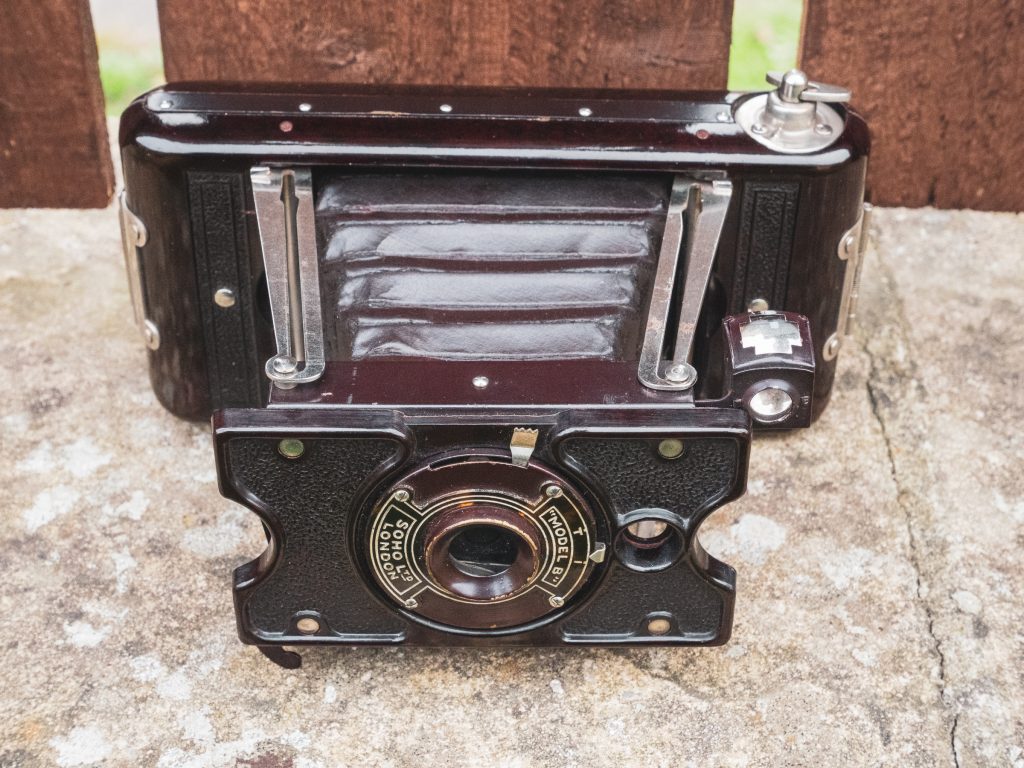
Which company made the Soho Model B?
An advert in the Daily Herald of Wednesday July 17th 1935, advertises the camera discounted at 8 shillings and ninepence as “wonderful value” and remarks on the “specially reinforced bellows”. The bellows in question are referenced in patent number 330438, which can be seen moulded into the interior of the detachable film door. The patent application was submitted in July 1929 by Norman Kershaw and Amalgamated Photographic Manufacturers Ltd. (APM).
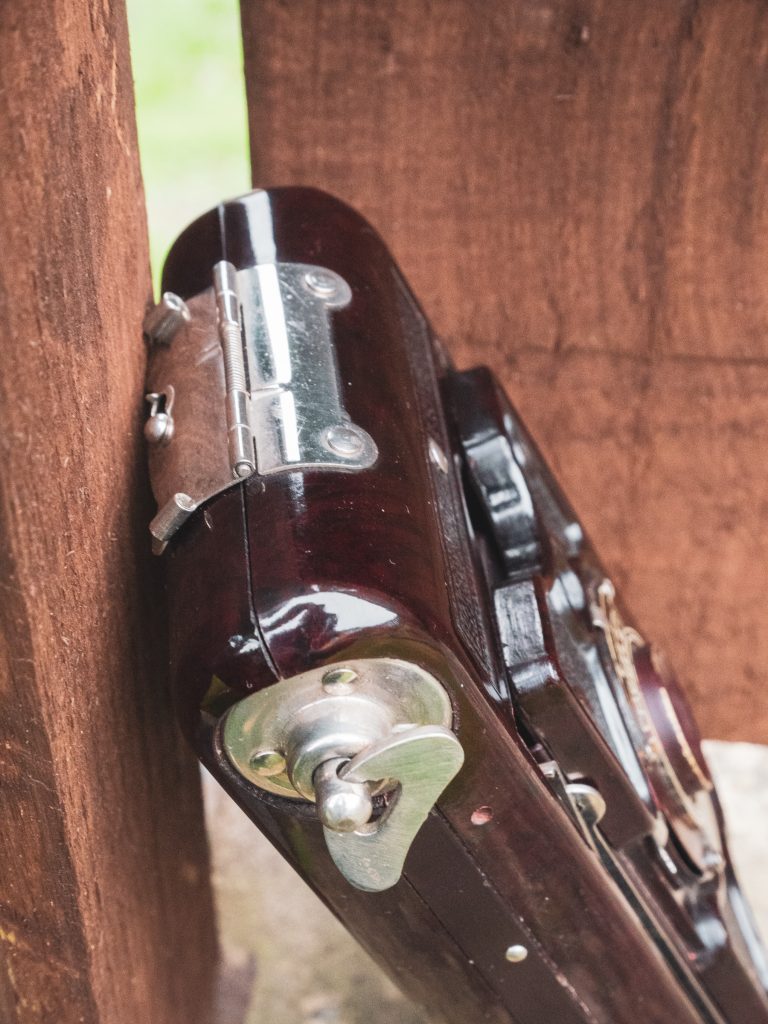
APM of course were responsible for the Rajar No.6. In reality both cameras were manufactured by Kershaw & Sons Ltd of Leeds. APM was the amalgamation of several British photographic business; Kershaw Optical Co. Ltd., A. Kershaw & Son Ltd., Marion & Co. Ltd., Rotary Photographic Co. Ltd., Rajar Ltd. (founded 1901), Paget Prize Plate Co. Ltd. and Marion & Co. Ltd.
Kershaws and Marion & Co. Ltd were the camera manufacturing parts of the enterprise. Following the break up of APM in 1929, the camera making partners of the former amalgamation formed Soho Ltd.
Design and handling
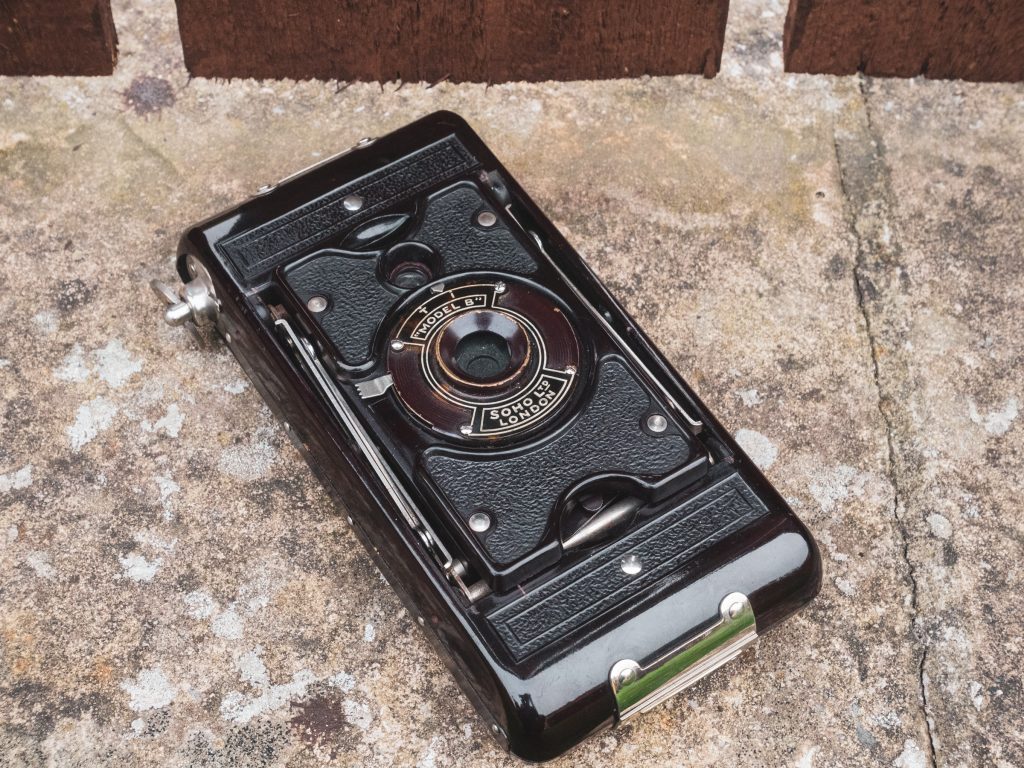
Weighing in at 472 grammes, the Model B feels better made than the Rajar No.6. Both the bellows anD the struts particularly seem to fare better than the Rajar No.6. The struts on that model are frequently in a corroded state (with the plastic of course showing much less degradation).
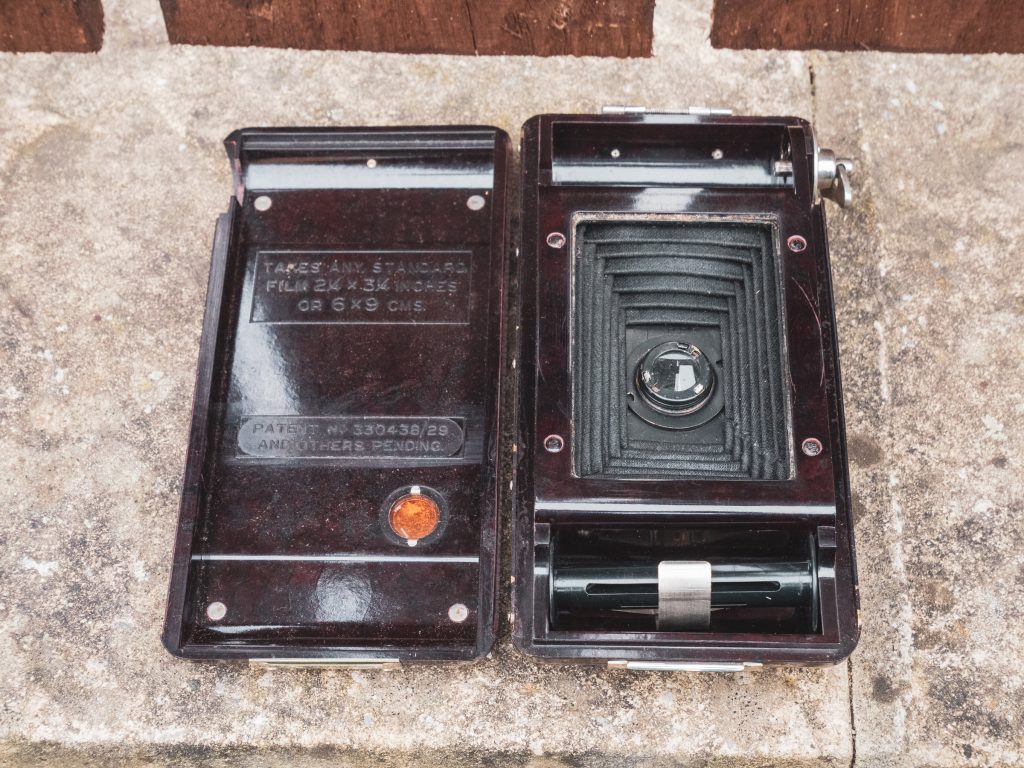
The catch that releases the film has a satisfying tension that keeps the back on securely. You will see the same design on other non-plastic APM and Soho folding cameras, as sell as American Ansco cameras. In fact, APM and Soho imported models from Ansco and rebadged them and added Kershaw lenses.
The struts lock firmly into place, projecting the bellows into the open position by tensioned springs that push the front plate of the camera forward when released by pushing in two tabs that hold it close to the body of the camera.
To close the camera, a tab and button highlighted by a read dot need to be pushed to release the struts from the locked position. Some force is required to tension the springs and close the front until the tabs click and hold it in place.
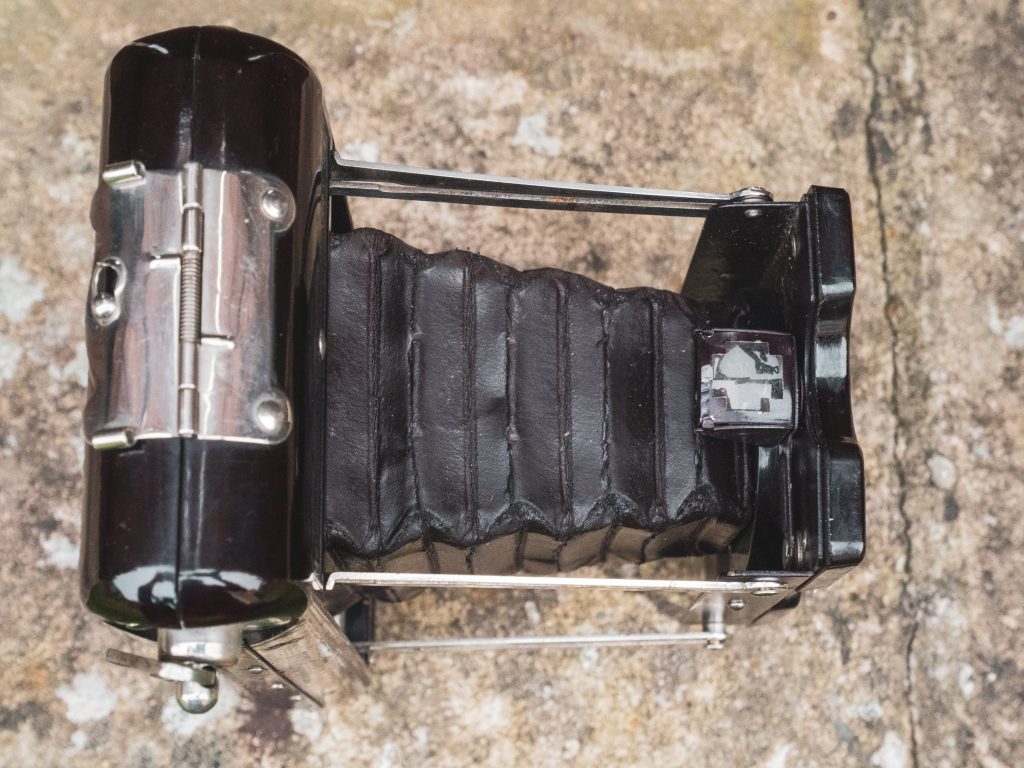
Despite being produced during the main Art Deco period, the design of the camera is restrained and traditional, imitating leatherette covered metal cameras with its plastic textured finish and raised lines.
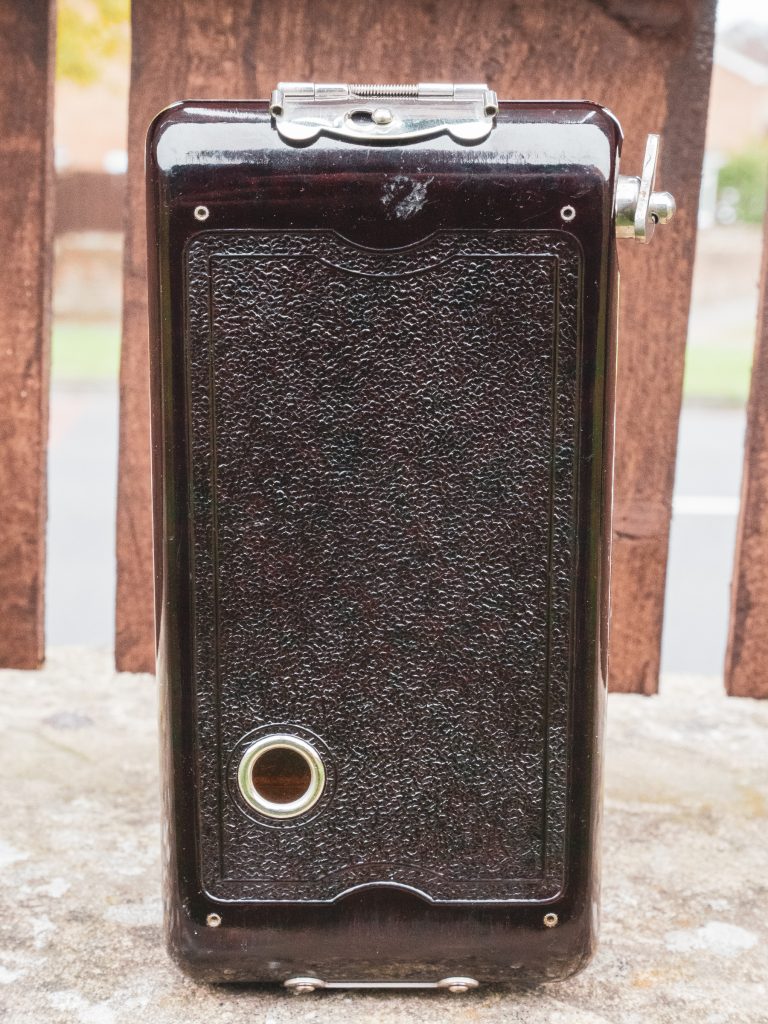
Where the two halves of the camera mould join, you will notice metal profiled strips. These are designed specifically to join and cover the seams between the two Bakelite moulds, masking any inaccuracies in the line of the join.
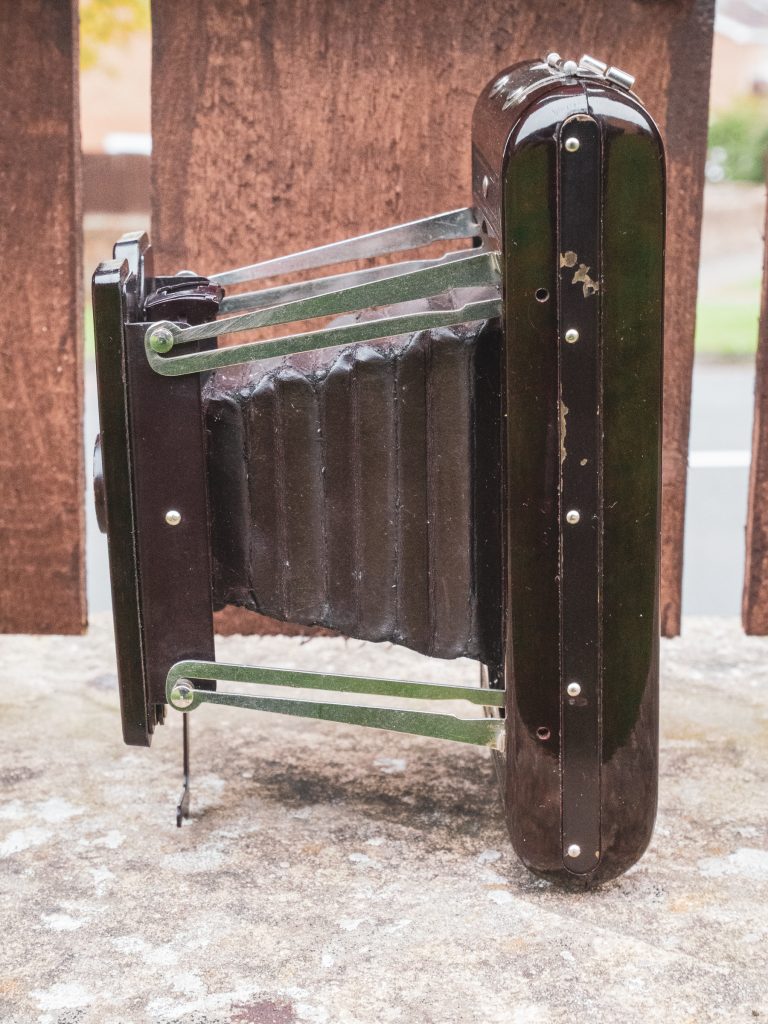
Collectable, but beware as usual
This camera is relatively easy to find on eBay, but beware of condition as usual. Cracks in the Bakelite and bellows integrity will affect value. They don’t go for much, so if you get a dog first time, you won’t have lost a fortune.
